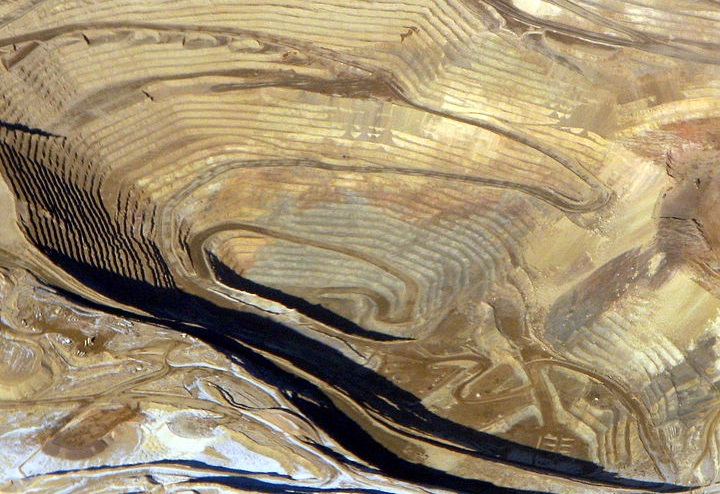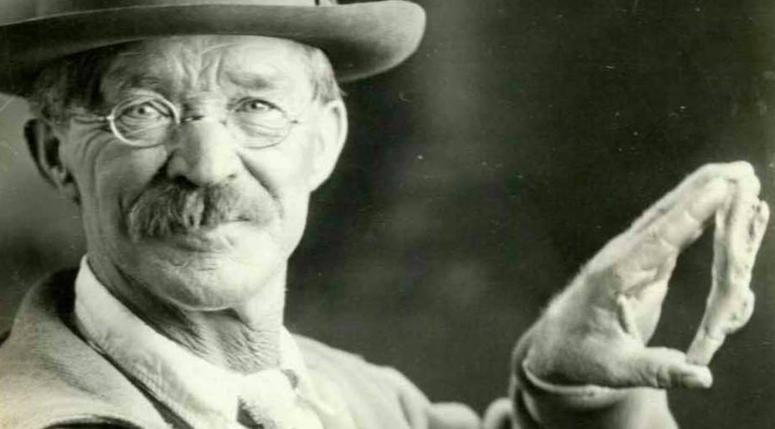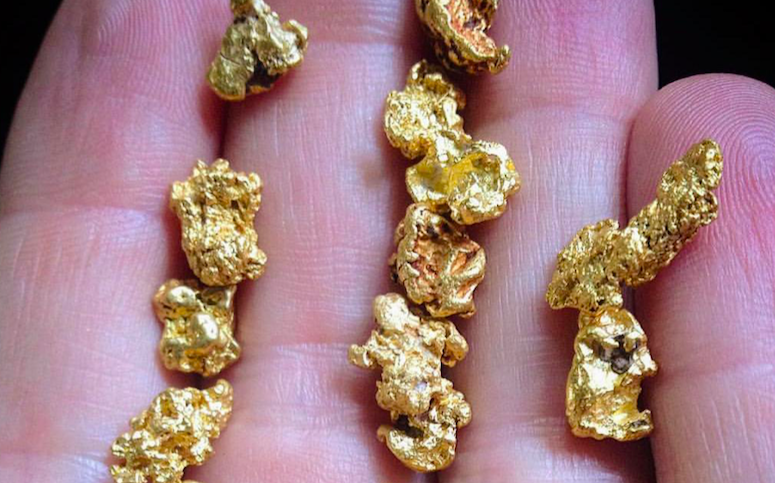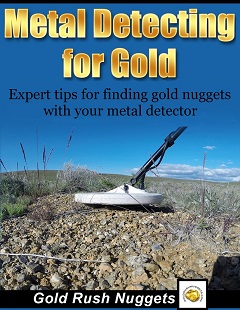
What do most people think of when they think of natural treasures? I consider the natural mineral that come from the Earth… things like diamonds, emeralds, gold, silver, rubies and sapphires.
Natural gold is of particular interest for a couple of reasons. Over the past few years this precious metal has hovered between $1200 and $1600 per troy ounce. There’s only so much of it out there, and every piece that is found by a miner means there is one less piece of gold on Earth.
But gold from the Earth has value beyond the metal itself. Small pieces can be refined down into a coin or a bar. Their value is based purely on the metal. But natural gold nuggets are something very different. Their value is based well beyond just the metal contained within them. And they are actually much rarer than a diamond.
Gold Nuggets are a Strange Beast…
Gold nuggets aren’t widely dispersed across the landscape. In fact, I would estimate that WAY LESS than 1% of the landscape of the Earth has the potential for gold. There are many more areas that you would be able to find some very fine gold, but locations were you have any possibility of finding a big chunky nugget are exceedingly rare.
So if we are talking about big, chunky gold nuggets weighing several grams or ounces, then you had better do your research. They only occur in limited areas. For this reason alone, those big nuggets are one of the hardest things to find.
Even people who specialize in finding gold can spend days or weeks trying to find even a single piece of gold.
The Big Mines aren’t Finding Big Gold
You might think that gold nuggets are found by the fistful by those big commercial pit mines scattered throughout the West. Those mulit-billion dollar companies like Newmont or Barrick definitely find a lot of gold, but every speck of gold is being crushed, refined and processed into bullion.
Gold nuggets are found almost exclusively by small and medium-scale mine operators. And even these smaller operators don’t necessarily find nuggets. Most of what they find are tiny specks of gold dust, the occasional flake or “picker,” and maybe an occasional nugget.
I know some placer miners who find 100+ ounces of gold each year, yet not a single piece of gold weighed more than 1 gram! Every piece is small… the area that they mine simply doesn’t produce nuggets. This is more common than not. Areas with big gold are the exception, not the rule.

The Old-Timers Didn’t Find it all the Gold, but they Found Most of it
If you’ve ever read about the encounters of miners written back in the 1800s, you will probably find some amazing reports of heavy pokes of gold and heavy nuggets weighing pounds each. No doubt, those old-timers made some exceptional discoveries!
You will commonly read modern articles where people will tell you that these same old-timers left most of the gold behind. This is kind of true, but it is confusing. Fact is, they found almost ALL of the EASY gold. There is still tons of gold left on Earth yet to be mined, but it’s not going to be in heavy concentrations like it was back in 1849.
The old-timers cleaned out most of the heavily concentrated placer deposits that were in creek and rivers. It is very rare for a prospector today to find a pocket of gold that would accumulate to more than a couple of grams. Yet, back in the 1800s it was common to recover several ounces of gold per day. They days of huge gold recovery from placer deposits are largely over, and big nuggets simply aren’t the common occurrence that they were back in the gold ol’ days of the California or Klondike rushes.

Almost all of the Gold found today is SMALL
Just like with gemstones, you can expect to find more small ones than big ones. I know lots of serious hardcore miners who have never found a 1-ounce gold nugget.
If you simply use a gold pan or a sluice box and shovel some gravel along a gold-bearing creek, you will be lucky to find a gram of fine gold in a hard days work. What you probably won’t find is a sluice packed with chunky nuggets.
If you want to focus specifically on finding gold nugget, then you will have the best luck with a good metal detector that is designed to find nuggets. But even the best gold detector can’t find a nugget that isn’t there. You need to find good areas to search, and most of the best nugget producing areas have been pounded hard over the past few decades.
I will say it again… even some of the best and most skill gold prospectors I know can go day, weeks, even months between nuggets. If we’re talking about BIG gold nuggets, then the drought might last for years!
It takes a lot of hard work and persistence to find them. When you do find one, you have done something that very few people on Earth have done.
Big gold nuggets are one of the rarest things on Earth.
Read: Detecting for Big Gold Nuggets & Specimens in Tailing Piles


